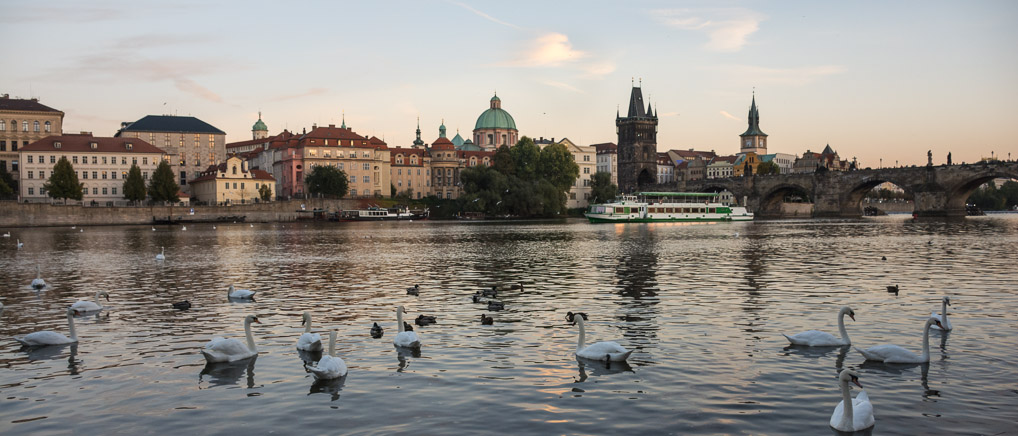After eating our own breakfast, we set out with a small group of fellow-guests for an excursion on the Plantation Trail. The trail head is located at the bottom of Semaphore Hill and is the remnant of a road built in the early 1900’s by a large plantation that produced cacao, coffee and rubber in the area. It’s a fairly easy hike with a modest, gentle ascent up the hill. It tends to be a popular place for mountain bikers on the weekend, so probably best visited by birders during the week (which is when we went). The habitat is very similar to that of Semaphore Hill Road; dense forest and forest edges.
Our guide today was Danilo Jr., an earnest young man with a shy smile. Like all the Canopy Tower guides, he knows his stuff (and yes his dad, Danilo Sr., also works for the Canopy Family 🙂 ). The trek began with some Orange-chinned Parakeets high up in the tree tops. These were soon followed by a small mixed group of antwrens and antbirds foraging near the forest floor.
I was really wanting to see trogons and we lucked out with excellent looks at a male and female Black-throated pair. We also saw several motmots (both Rufous and Broad-billed). Motmots nest in burrows they typically excavate in the banks along a roadway or stream. One of the birds we saw had mud crusted on its bill, indicating nest construction was likely underway.
Other birdy highlights of the morning included Collared Aracaris, Chestnut-headed Oropendolas, a handful of flycatcher species and some adorable, diminutive manakins.
In addition to the birds, we encountered a troop of white-faced capuchin monkeys, and several coatimundis scuttled across the path ahead of us. Mid-way up the trail, we stopped to enjoy a pretty waterfall tumbling down the hillside into an equally pretty stream.
It was another pleasant morning spent in the company of like-minded nature lovers. There was a really nice sense of camaraderie among the Canopy Tower guests the whole week we were there.
Back at the Tower for lunch, a group of Geoffroy’s tamarins moved into the trees right outside the dining area. These guys look a bit like little old men to me (in the cutest way possible!). Their antics kept us well entertained while we ate.
Our afternoon outing took us to the Summit Municipal Park, a botanical garden and small zoo located within Soberanía National Park. The park started as an experimental farm in the 1920’s to see how plants from different parts of the world would adapt to Panama’s tropical climate. The zoo was added in the 1960’s and today houses some 300 animals, most of which are species native to Panama. The park also serves as a rescue and rehabilitation center for wild animals that have been injured and/or confiscated from people keeping them illegally as pets. Some of the enclosures are on the cramped side, but it’s a nice place to visit.
For the bird-obsessed, the star attraction of the zoo is “Panama” the Harpy Eagle. She was born at the Miami zoo, and came to live at the Summit Park in 2013. The Harpy Eagle is one of the largest eagle species in the world and is the national bird of Panama. We all oohed and aahed over “Panama”. She’s pretty magnificent.
The park also has a number of unofficial residents that come and go from the surrounding rainforest. Agoutis are abundant, and a number of bird species utilize the botanical gardens for food and shelter.
The non-captive birds were our main focus for the afternoon. Some of our finds included Variable Seedeaters, Crimson-backed, Blue-gray, and Golden-hooded Tanagers, Clay-colored Thrushes, and Keel-billed Toucans. On the flying mammal front, we discovered a couple of common tent-making bats snuggling together under a huge palm frond.
It was a good day, and for the first time since arriving in Panama, no rain! On the drive back up Semaphore Hill to the Canopy Tower, we made another pit stop at the night monkey roost. This time they were home! We had to scramble down a slippery, muddy hillside to get a look at them, but the reward was two sweet little faces with big, round eyes, peering at us from the cavity in their roost tree. Danilo managed to set up his spotting scope at a rather precarious angle on the steep slope so that we could get good looks. He also attempted to get photos with people’s cameras as there really wasn’t room (or secure footing) for us all to position ourselves to get decent shots.
That evening at dinner I chatted with a technical writer from Oregon about travel, birds, and the trials of introducing a new cat into a household that already has cats (territorial little beasts that they are!). The cat topic was something we were both going through at the time (don’t worry birders, my cats are kept strictly indoors! 🙂 ).
Soon it was off to bed, in preparation for another fun-filled day in Panama…


















